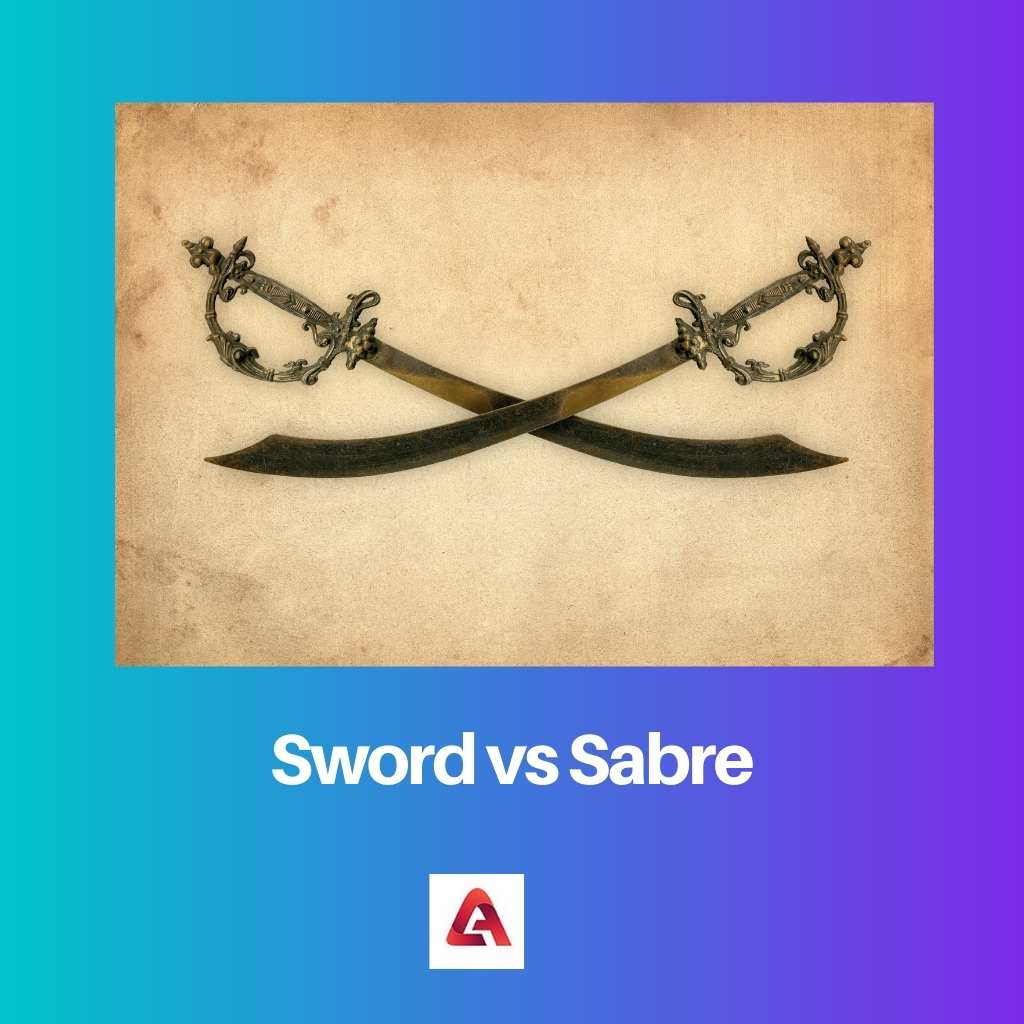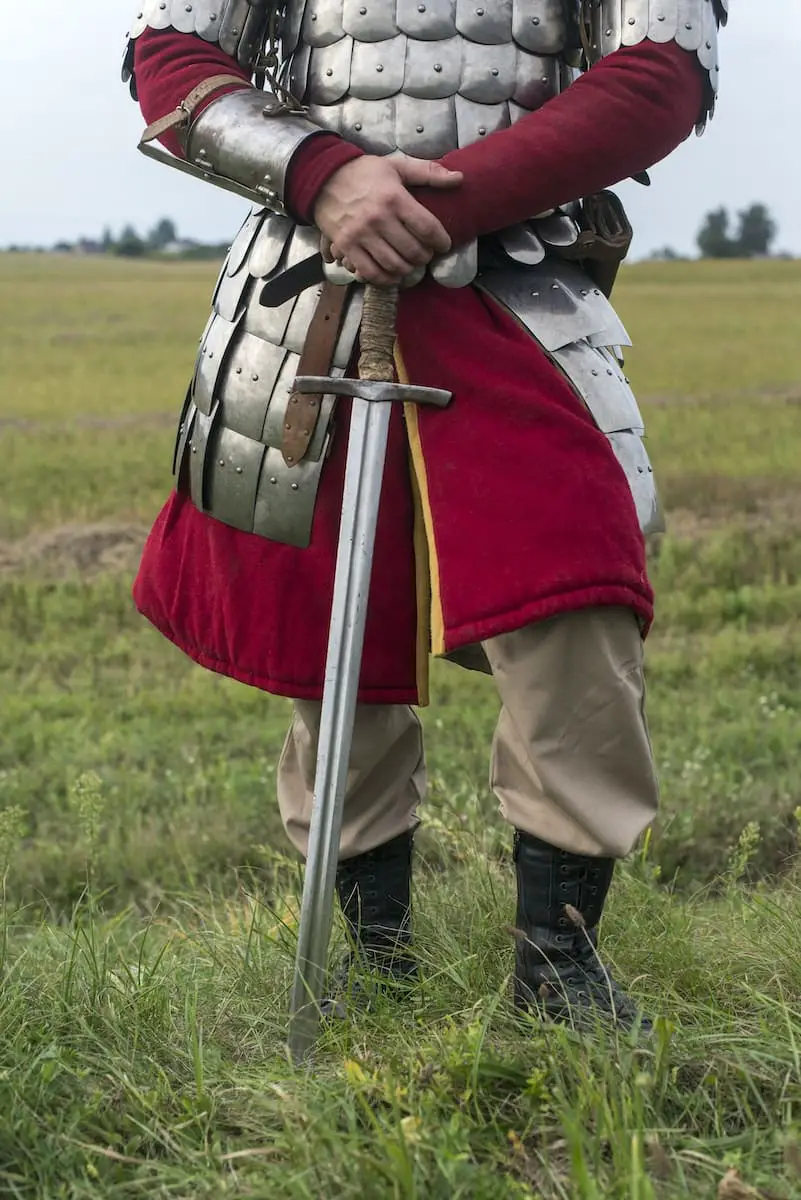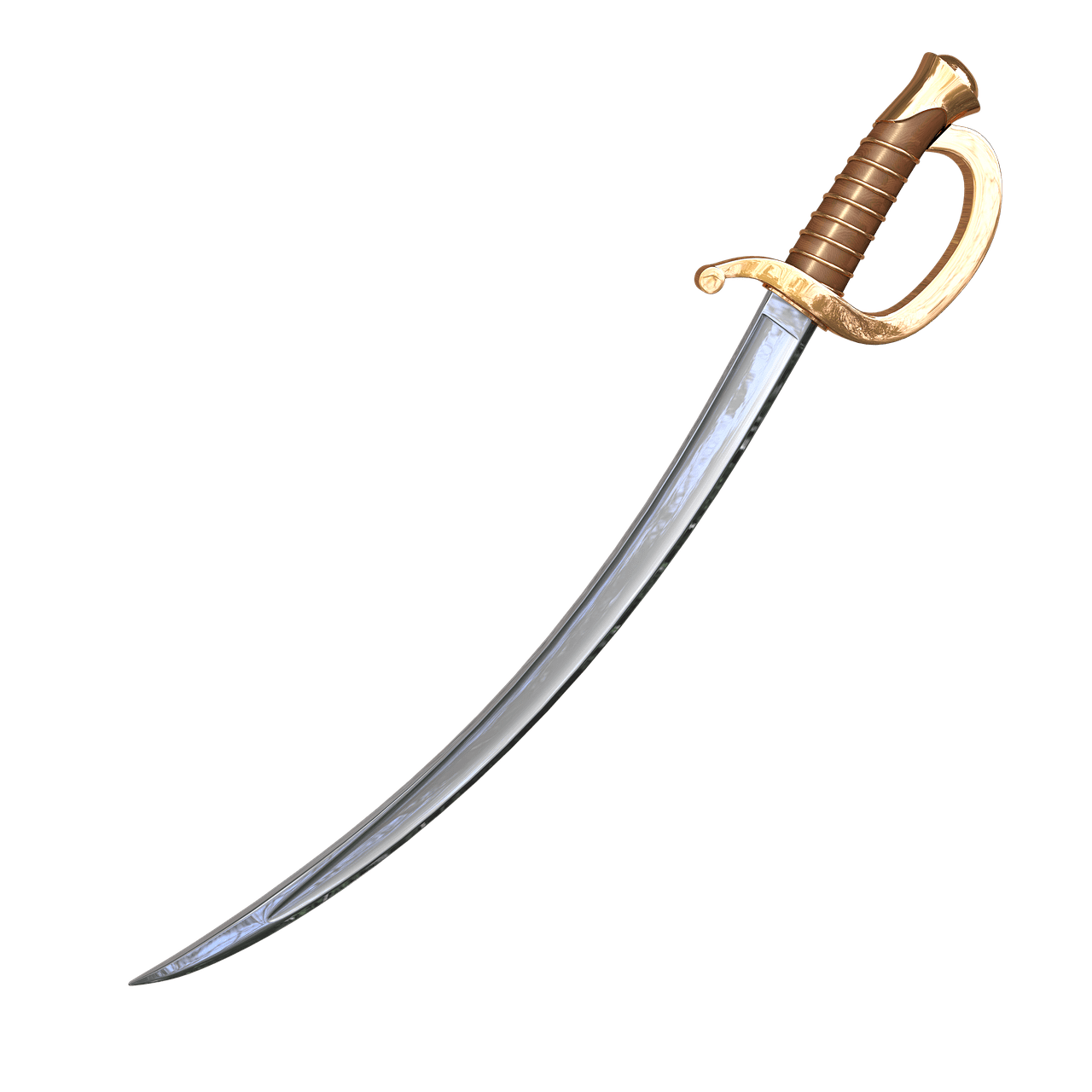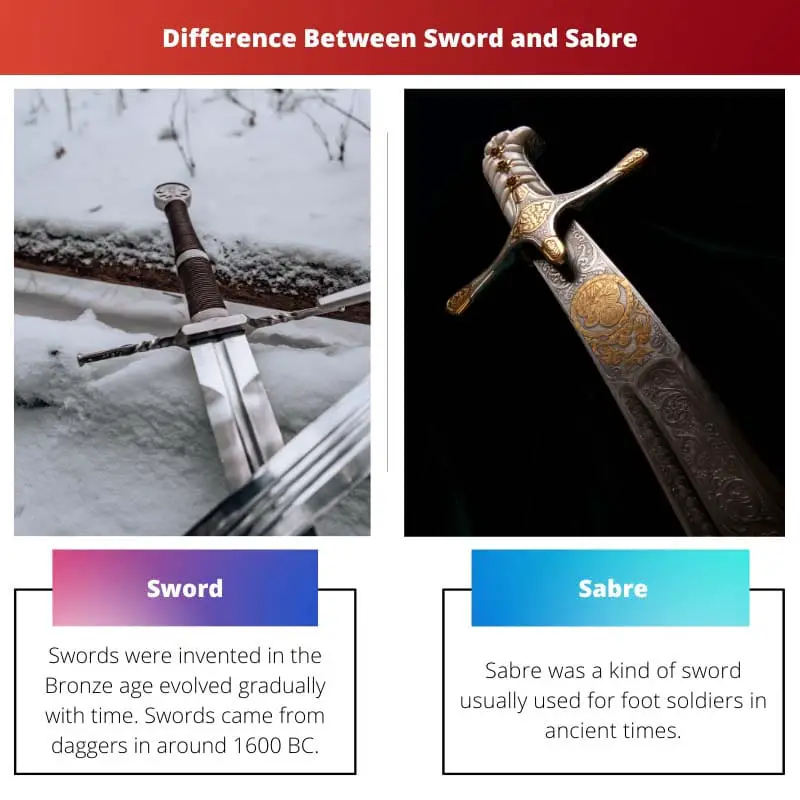Sword and Sabre are two similar as well as different things. Sword is used for describing a long sharp curved blade. Sabre describes a particular European sword.
They are special and can also be said as slashing swords. . It was used as a duelling weapon in academic fencing in the 19th century.
Sword, in general, is used to describing every sharp long metal stick kind of object. There are many different swords from different ages. They are edged blades that are manually used for cutting or thrusting. They are longer in size from daggers or knives.
Sabre is a type of sword associated with the West European culture of the early modern period. Sabre was used in many wars like Early modern warfare, the American revolution, Philippine Revolution, World War I, World War II, etc. Sabre play a significant role in history.
Key Takeaways
- Swords are general terms for bladed weapons with a straight or slightly curved blade, while sabres are specific swords with a single-edged, curved blade.
- Swords have been used in various cultures and historical periods, whereas sabres gained popularity in the 18th and 19th centuries, particularly among cavalry units.
- The primary difference between swords and sabres lies in their blade design, with swords being more versatile and suited for thrusting and cutting, while sabres are primarily designed for slashing.
Sword vs Sabre
The difference between Sword and Sabre is that Sword denotes the whole family. This includes multiple types, for example, two-handed sword, Greatsword, etc. On the other hand, Sabre is a sword that has a single curved cutting blade.

Swords were invented in the Bronze age evolved gradually with time. Swords came from daggers in around 1600 BC. The word Sword evolved from the word ‘sweord’. Fencing, in ancient times, was known as swordsmanship.
Sabre was a kind of sword used for foot soldiers in ancient times. The origin of Sabre was as a single edge sword in the early 16th century.
Later in the 17th century, the single edge sword developed into a little long single-edged curved sword which came to be known as Sabre.
Comparison Table
| Parameters of Comparison | Sword | Sabre |
|---|---|---|
| Origin age | Bronze age dates back to 3300 BC | In the 16th century partially but in the 17th century came to the proper type of Sabre |
| Origin Area | In the Bronze, age swords were found in the area of Arslantepe and Turkey | In the 16th century of Western Europe |
| Evolved from | Swords are said to have evolved from daggers | They are said to have derived from a Hungarian cavalry sword |
| Types | Based on the areas we can find different types of swords. In East Asia, we can find Dao, Jian, Hook sword, Nihonto, etc. | We can find around 10 types of Sabre swords like Talwar, Cutlass, Falchion, Estoc, etc. |
| Size | Sword weights around 1kg and 90cm overall with 75cm of blade | Sabre is of around 500g and 105cm overall size with a 88cm blade |
What is Sword?
Sword is like an instrument with a long blade and a place to hold. Swords are larger than Daggers or knives. They are used for either slashing or thrusting or both.
The development of the sword started in the bronze age evolving from the style of dagger but bigger. In ancient times, swords were used in war affairs.
The bronze age sword gradually evolved into the Iron age sword with short handles. The late roman army developed the Spatha. The Spatha middle-age Europe evolved into the Migration period sword.
In the High middle ages, we find Arming swords. The first proper sword is from 3300BC made up of Arsenical bronze.
Sword developed from either dagger or knife as we have both single-edged and double-edged swords. In 1700BC, we find the existence of sword-like weapons.
They were more than 100cm in length. From the European Bronze age, Naue II was one of the strongest and most lasting swords.
Some important types of swords are Single and double-edged swords, Jian, Kirpan, Churika, Backsword and falchion, sing and two-handed sword, etc. These all are classified based on the structure, length, blade, ages, origins.

What is Sabre?
Sabre is a single-edged curved blade sword. It is related to the early modern swords, the light cavalry. In origin, we trace back to Hussars, central European cavalry.
During the Thirty years’ war, we see a widespread of Sabre swords. In the 17th century Sabre was lightweight, while in the 19th century, it was less curved.
Modern Sabre, fencing, was derived from the military Sabre from the 19th-century academic fencing. Sabre fencing was introduced to Summer Olympics in 1896. These types of swords are used for slashing and thrusting.
The word, Sabre, was derived from Hungarian szabla from the 14th century. From Hungarian szabla, Germans evolved the word into Polish szabla.
Sabel was again evolved in the german dictionary later on the 1630s was borrowed by french. Later, it came to an English dictionary borrowed from the french word sable.
In ancient Egyptian and other parts of the world, were already had, Sabre. The foot soldiers were using this sword for duelling or slashing others. In China, southern Siberia also used this kind of sword. They developed into this modern Sabre gradually.

Main Differences Between Sword and Sabre
- All kind of Sabre falls under the sword family. But not all swords are Sabre.
- Sword can be double-edged or single-edged. But Sabre is specifically single-edged.
- Swords can be straight or curved depending on the type of Sword, and Sabre is a type of Sword that is curved in nature.
- The word sword is an old English word, and Sabre from Hungarian szabla.
- Sword came into existence in the Bronze age, and Sabre came to notice in the 16th century.
- Sword is more heavyweight, and Sabre is lightweight if compared.

- https://onlinelibrary.wiley.com/doi/abs/10.1002/crat.200410456
- https://bop.unibe.ch/apd/article/view/7213
- https://www.ucl.ac.uk/archaeo-metallurgical-studies/sites/archaeo-metallurgical-studies/files/iams_25_2005_feuerbach.pdf
- https://ruj.uj.edu.pl/xmlui/bitstream/handle/item/148569/stachowski_the_origin_of_the_european_word_for_sabre_2004.odt?sequence=2&isAllowed=y
